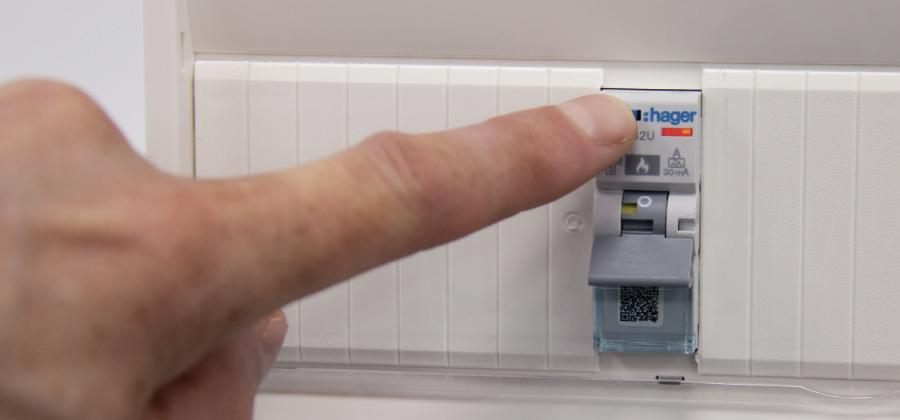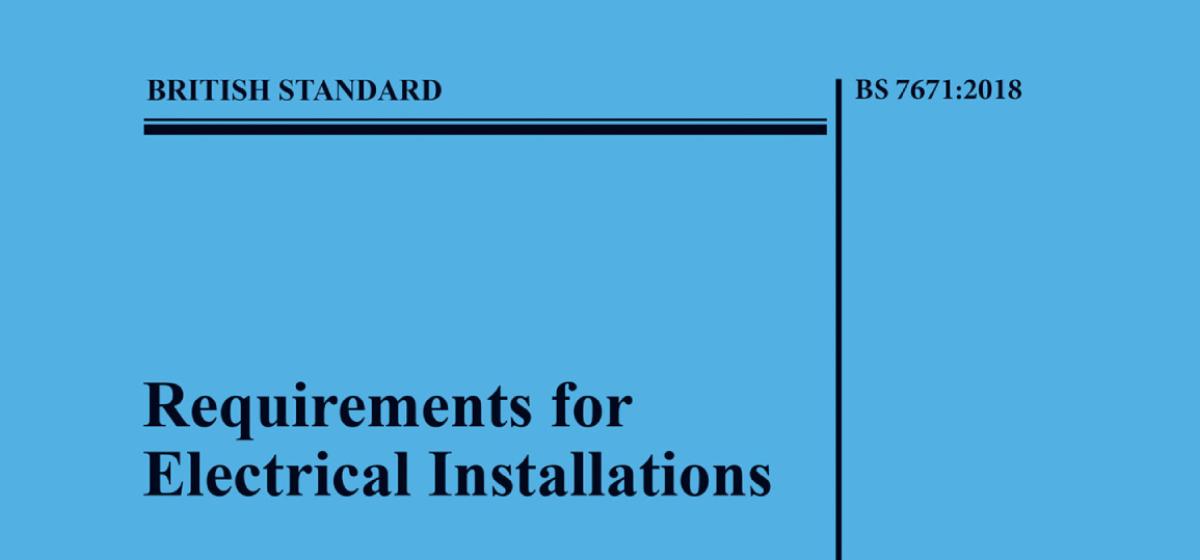
What is an AFDD and Who Needs an Arc Fault Detection Device?
We have recently lowered the prices for the Hager AFDDs and we thought we should introduce the Arc Fault Detection Devices - what they are, who needs them, and what are their use. Keep reading to find out more about:Why Arc Fault Detection Devices and Where are AFDDs used?What is an AFDD? What does an AFDD Do?How do AFDDs work?Are AFDDs Required and Who Needs an Arc Fault Detection Device?AFDDs at Sparks - Hager AFDDs at a Discounted PriceHager ProTools for Hager AFDDs - FeaturesHow to Test a Hager AFDDArticles on AFDDs - Further readingWhy Arc Fault Detection Devices and Where are AFDDs used?After the publication of Amendment 2 of the 18th Edition Wiring Regulation on the 28th of March 2022, the use of AFDDs (Arc Fault Detection Device) has been made mandatory use in certain types of installations. Regulation 421.1.7 now states AFDD conforming to BS EN 62606 shall be provided for single-phase AC final circuits supplying socket-outlets with a rated current not exceeding 32 A in:Higher Risk Residential Buildings (HRRB)Houses in Multiple Occupation (HMO)Purpose-Built Student Accommodation (PBSA)Care homesFor all other premises, the use of AFDDs is recommended for single-phase AC final circuits supplying socket outlets not exceeding 32 A. In the notes of the 18th Edition, there is guidance on the language used in BS 7671. There is also a table describing verbal forms which may be used and the verbal form for recommendation can be translated to “should”.Buy Hager AFDDs at SparksWhat is an AFDD? What does an AFDD Do?An AFDD (Arc Fault Detection Device) is designed to detect the presence of dangerous electrical arcs and disconnect the circuit affected, in order to protect human life and the electrical wiring circuit. An arc fault is where an electrical current jumps between two conductive materials. There can be a parallel arc fault or a series arc faults. One of the most common causes of arcs are worn contacts in the electrical equipment, loose connections, or break in the cables. Arc faults can occur for a number of reasons such as breaks in a cable, damaged cables as a result of DIY projects, defective plugs, rodent bites, cable wear, incorrect bonding, etc. What an Arc Fault Detection Device do is use microprocessor technology to analyse the waveform of the electricity, detect any unusual or higher current jump, and terminate the power to the affected circuit to prevent a fire. There are the MCBs and RCBOs that do the same function, but the AFDDs are more sensitive to arcs than these conventional circuit protection devices. The purpose of an AFDD is to make sure no electrical fire takes place; whether there's a short-circuit or an overload, an earth leakage current or an overvoltage, or a dangerous electric arc, an AFDD detects and trips the circuit. How do AFDDs work?Unlike a circuit breaker which detects overloads and short circuit currents and RCDs which detect current imbalance, an AFDD utilises electronic technology to analyse the signature (waveform) of an arc to differentiate between normal arcing and arcing faults. Although AFDD manufacturers may employ different technologies to analyse arcs, the end result is the same, detecting parallel arcs (line to line, line to neutral and line to earth) and series arcs (arcing within one of the conductors). Upon detection of an arcing fault, the AFDD disconnects the final circuit from the supply. AFDD manufacturers test for numerous possible operating conditions and design their devices to constantly monitor for arcing faults.AFDDs are designed and tested to not respond to arcing under normal operation of equipment such as vacuum cleaners, drills, dimmers, switch mode power supplies, fluorescent lamps, etc. In addition, they are designed and tested to continue to respond to arc faults whilst the aforementioned equipment is being operated.Are AFDDs Required and Who Needs an Arc Fault Detection Device?Though much more expensive than a regular RCBO or MCB, an AFDD can be a lifesaver especially where there is more than one life on the line. So far Amendment 2 only recommends the use of AFDD in domestic use, but they require Arc Fault Detection Devices to be used in certain applications. UK fire statistics identify that electrical fires are still unacceptably high. The use of overcurrent and residual current protection has vastly reduced the risk and consequence of electrical fires. Electrical fires can be a silent killer occurring in areas of the home that are hidden from view and early detection. If used, an AFDD should be placed at the origin of the circuit to be protected. Examples of locations where AFDDs should be used are:premises with sleeping accommodationlocations with a risk of fire due to the nature of processed or stored materials, i.e. BE2 locations (e.g. barns, woodworking shops, stores of combustible materials)locations with combustible constructional materials, i.e. CA2 locations (e.g. wooden buildings)fire propagating structures, i.e. CB2 locationslocations with endangering of irreplaceable goods.AFDDs at Sparks - Hager AFDDs at a Discounted PriceAt Sparks, we are proud to stock and distribute the Hager AFDDs with AFDD ProTools diagnostic software for the best price - even a discounted price at the moment. The next generation of single module wide AFDDs comes with advanced ProTools diagnostic software as standard. Exclusive to Hager AFDDs, ProTools provides the professional installer with advanced fault-finding and rectification capabilities.Best price for Hager Arc Fault Detection DeviceHager ProTools for Hager AFDDs - FeaturesProTools - On-Board Diagnostics: With the ability to identify 8 statuses, the on-board diagnostics within the device save time and effort in fault finding.ProTools - Diagnostic Support: Access additional diagnostic support and guidance when on-site via the Hager Pilot app on your mobile device.ProTools - In Situ Software Upgrades: The ability to update software via Bluetooth connectivity as and when new electrical signatures are detected, eliminates the need to remove or replace the device in the futureRCBO & MCB Configurations: Available in both RCBO and MCB single module configurations.Backwards Compatibility: Save time on site and upgrade existing Hager MCB-based installations to AFDD with minimal cost and disruption to you and your customers.Hager Technical Support: Receive technical advice with device installation and fault finding from the Hager Telford-based team of technical experts that are on hand to support you. The Hager AFDD with ProTools guarantees that you’re getting that fit-and-forget assurance you’ve come to expect from their products. In addition to the On-Board Diagnostics, the Hager Pilot app contains diagnostic guides providing a step-by-step approach to fault finding, ensuring that the professional electrician can quickly and easily identify the cause of any problems encountered. Exclusive to Hager ProTools, all the AFDDs come equipped with Bluetooth functionality to enable in situ software upgrades.How to Test a Hager AFDDYou don’t need to specifically test the AFDD element as they have a self-test feature. As per the requirements of the product standards, the AFDD must perform a daily self-test. The Hager AFDD undertakes a self-test every hour and should a fault be identified, it will switch off the circuit and the LED status indicator will show that the self-test has failed. AFDDs have a test button on them which doubles up as the RCD test button if it is an RCBO/AFDD. In line with long-standing regulations, this is required to be pressed once every 6 months when the device should trip and will simply be switched back on by the user.Purchase Hager AFDD todayArticles on AFDDs - Further readingThis article was inspired from and partially taken from some of the most popular and informative articles and guides on the AFDDs, including:Single Mod Arc Fault Detection Device via Hager. Beama guide to arc fault detection devices AFDDs here. What you need to know about arc fault detection devices - AFDDs, via, Electrician Courses for you. Arc Fault Detection Devices (AFDD) via The IET. Hager Launches New AFDD Solution, the press release. Arc Fault Detection - via, Electrium. AFDDs: how and when to use them, via, ECA today.





